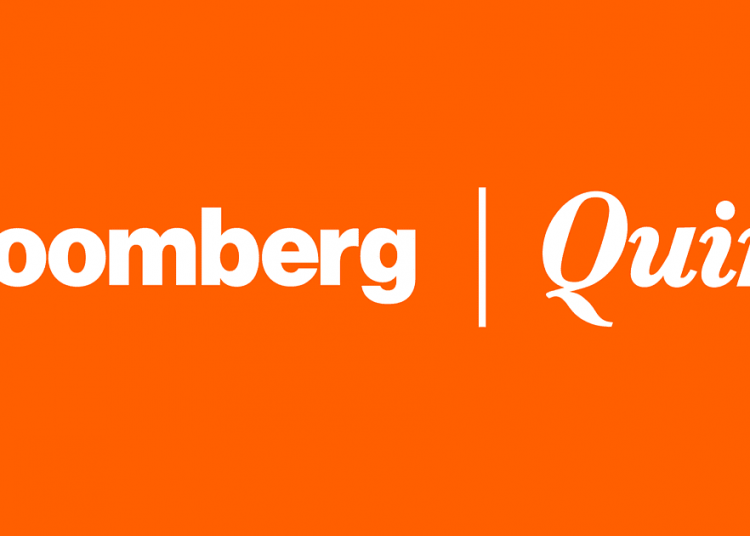(Bloomberg) — Qualcomm Inc. said company President Cristiano Amon will succeed Chief Executive Officer Steve Mollenkopf, who will retire in June after 26 years at the world’s biggest maker of smartphone chips.
After beginning his career as an engineer, Mollenkopf, 52, became CEO in 2014. He has led Qualcomm through several generations of smartphone technology and multiple crises, including a hostile takeover attempt and legal and regulatory challenges around the world that threatened to take away the company’s main source of profit.
Mollenkopf took over the top position from Paul Jacobs, son of founder Irwin Jacobs. He will continue to serve as a strategic adviser to Qualcomm for some time, the company said in a statement Tuesday. His retirement is effective June 30.
“I had been thinking for sometime, no matter when I retire, it’s going to seem early to people,” Mollenkopf said on a conference call. “My view was the right way to do it was do it when the company is in a very, very strong position at a natural stopping point. The mistake would be to go too long. I feel like I’ve done what I needed to do.”
Amon, a 50-year-old Brazilian, will become the fourth CEO of the San Diego-based company. An electrical engineer by training, Amon worked his way up through the ranks at Qualcomm, where he started in 1995, and has served as president since 2018.
“I grew up with this company,” Amon said. “I feel incredibly optimistic about the opportunity we have ahead of us. 5G is creating one of the single largest opportunities for Qualcomm.”
He will be tasked with delivering on the transition to the new 5G wireless standard, one which Amon has said will take Qualcomm’s products into a new range of new markets outside of smartphones. Investors are looking for a return to previous revenue highs delivered during the transition to 4G and meaningful progress in areas such as automotive, personal computer, and networking equipment silicon.
“He was the natural choice if and when a change was to be made,” said Sanford C. Bernstein analyst Stacy Rasgon in a research note. “We don’t expect any major changes from the shift.”
Qualcomm shares have gained about 71% in the past year. They rose about 2% in New York trading Tuesday.
Under Mollenkopf, Qualcomm was attacked by regulators and customers for its unique business model, in which it charges licensing fees for smartphone technology regardless of whether phonemakers buy chips or not. Through a legal battle with Apple Inc. and a U.S. antitrust case, Qualcomm’s opponents have tried to break its lock on the fundamentals of technology that underpin modern phone systems with little success.
The taciturn Mollenkopf saw the challenges as a negotiating tactic by customers that would fade when they realized they needed Qualcomm for the next new technology standard transition. Indeed, Apple joined the ranks of licensees and continues to use Qualcomm modems in the iPhone. Other major customers such as Samsung Electronics Co. have signed long-term licensing agreements. Qualcomm has won all of its court battles, including the right to charge license fees in China, a crucial win.
“Through it all, Mollenkopf’s approach was mostly to not get caught up in the moment, hunker down, and focus on the product roadmap,” according to Bernstein’s Rasgon. “And while controversial (and painful) at the time, looking back with the benefit of hindsight we have to admit that the approach was probably the right one for the long term.”
Under Mollenkopf’s leadership, Qualcomm’s stock first slumped as the legal battles mounted, but later rebounded to end 2020 at $152.34, more than double the price when he took office. The company is on course to record sales of $30 billion this year, according to the average of analysts’ estimates compiled by Bloomberg. That 41% growth spurt will then subside to gains in single digits in 2022 and 2023, according to those projections.
Amon has been the face of Qualcomm’s promise of leadership in 5G. He has argued that the new standard is happening faster than its predecessor and will give Qualcomm’s technology a role in new areas such self-driving cars. Amon has led the company back into the market for personal computer processors through a partnership with Microsoft Corp. to challenge Intel Corp.’s dominance there and has launched new initiatives such as chips for cellphone base stations.
Amon will also have to steer Qualcomm through a world where its customers are more capable of supplying themselves than they’ve ever been, pushing his company’s products forward faster to continue to make them essential. Apple now makes its own processors and has embarked on an effort to supply itself with modems. Samsung already makes both of those products and China’s Huawei Technologies Co. is already largely self-sufficient. Qualcomm’s modems are at the heart of almost all of the first 5G devices that went mainstream last year.















